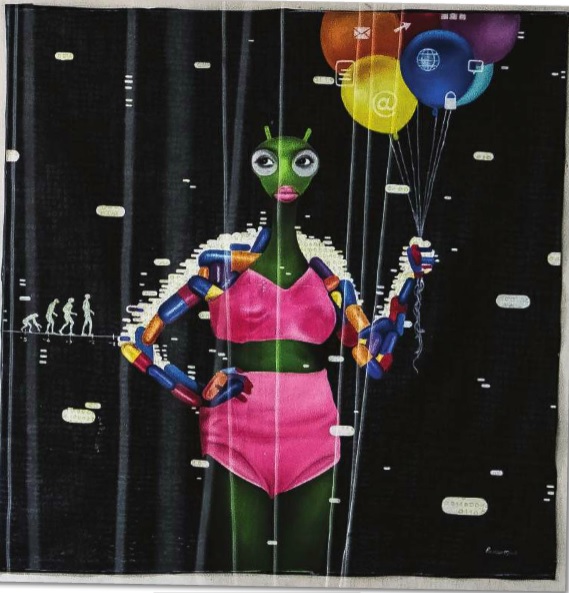
Kampala Biennale makes bold moves: But how smart was throwing out painting and favouring installations and performance?
Under the simmering mid-morning heat of Friday Sept.2, the Uganda Museum was transformed into a scene of wacky spectacle that left many observers utterly lost in translation. A man of Asian origin had taken centre stage in the massive courtyard between the museum building and the fence adjacent to the busy Mulago-Kamwokya highway. He was twisting and squirming back and forth inside and outside of a wooden boat, ostensibly languishing in severe pain. The bizarre display that started at 10am was to continue for succeeding hours as the more ‘informed’ viewers in the museum courtyard ‘critically’ analysed every single move he made while the ‘ignorant’ masses standing by the roadside; mainly boda boda riders and other passersby were completely dumbfounded by the display. Worse still, there was no one to offer them any answers.
It was that moment when one really wished to enter the minds of these people and just have a glimpse of what their imagination was. Perhaps the immediate thinking by most would be the path of total madness that artists have chosen to toe under the pretext of intellectualism.
This showcase titled ‘Liquidity’ was a 50-hour performance by Sajan Mani, an Indian artist that portrays the trials and tribulations of migration to greener pastures by citizens from less privileged countries. It was the opening act of several such displays that were to take place in a number of locations in Kampala for the subsequent month under the auspices of the second Kampala Art Biennale.
The inaugural Kampala Art Biennale took place in 2014 where over 7,000 visitors attended the six exhibitions showing works by 45 artists from 13 African countries. By any measure, this was the grandest public display of contemporary art in Uganda’s young art history.
The 2016 edition code-named “Seven Hills” raised the bar even higher by adding an international dimension to it; attracting artists from countries including DRC, Congo Brazza, Matinique, France, Germany, South Africa, UK and India. It was a clear shift from the initial pan-African standpoint to a more global outlook.
Along with artists, the event gathered a number of key industry players such as speakers, gallery proprietors, art historians, curators, museum directors, critics, and collectors from across the world to discuss a range of topics.
The director of the Binennale and founder of Afriart Gallery Daudi Karungi says the organisers “sought to strategically position the biennale in Kampala city because of its potential to become the next contemporary art destination on the African continent”.
He says the few events held only focus on traditional art forms and give a less comprehensive view of contemporary art forms. This is where this year’s event seems to point to a rebellion against the mainstream art expressions. The fact that there was no painting included in the show but only installations and performance was in itself a very bold statement of intent to revolutionise the way the public looks at art.
While the crowd at the Uganda Museum was awestruck by the rather disturbing spectacle, the one at the Uganda Railway Station and indeed others at venues scattered around town encountered even more spine-chilling demonstrations that tested the limits of art in a manner that cannot be described in this limited space. For instance, female Uganda artist Immy Mali made a strenuous display of a bike-rider, making uncanny movements and contortions that left the audience yearning for answers. Congolese artist Paul Alden Mvoutoukoulou lived to the true billing of his complicated moniker by creating installations inside the Uganda Museum exhibition halls that left many questions unanswered. Such was the just concluded Kampala Art Biennale that while many Kampalans loved it, a few doubled their doubt about the intentions and relevance of art, especially contemporary art.
****
editor@independent.co.ug
 The Independent Uganda: You get the Truth we Pay the Price
The Independent Uganda: You get the Truth we Pay the Price


